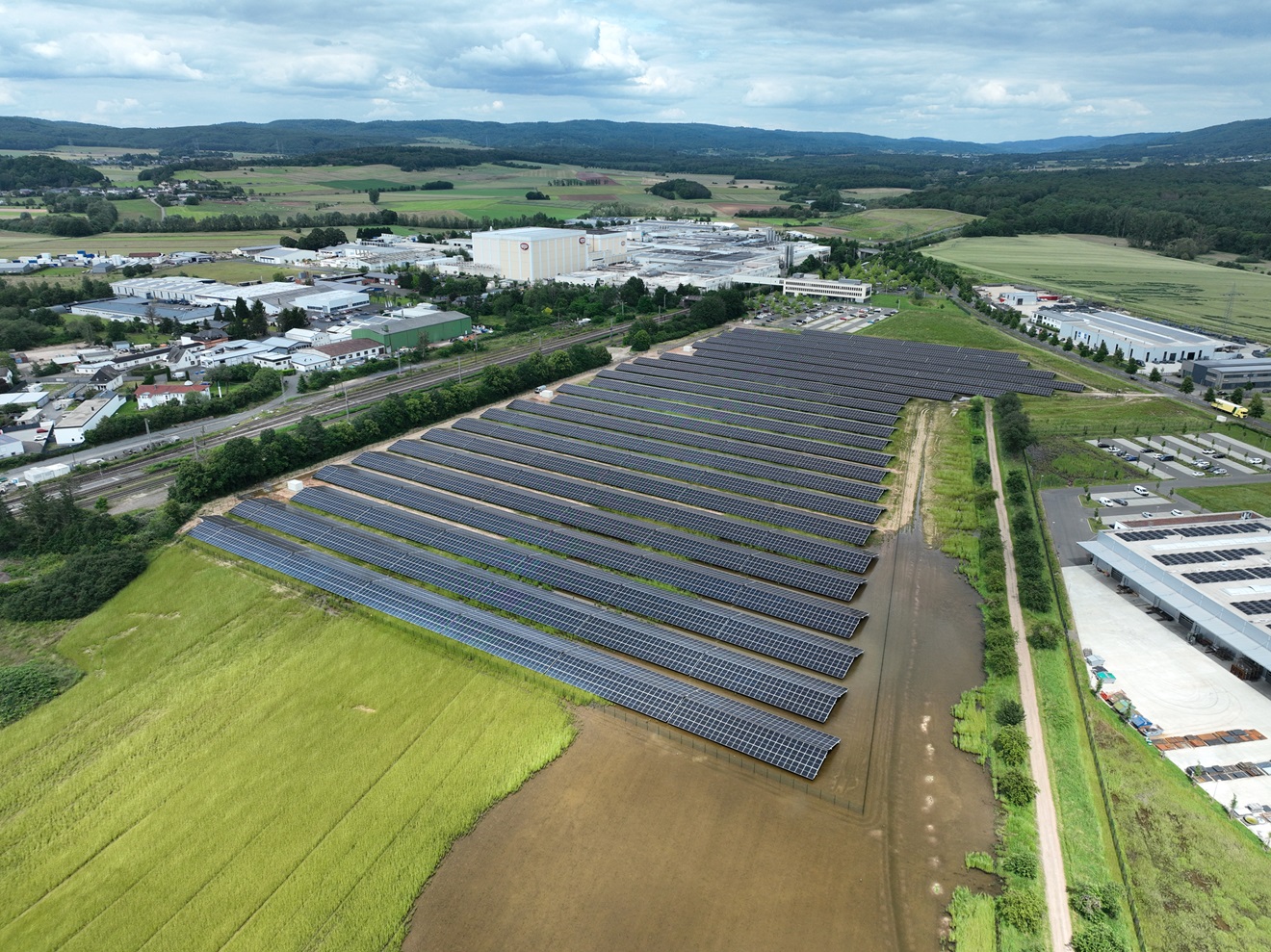Dr. Oetker Stories
Baked by the sun
At Dr. Oetker, we want to produce pizza, cakes and desserts without fossil fuels in the future. You can find out how we are going to do this and what measures we have already implemented here.

11.11.2024 • Sustainability Our World
Time to rethink: In the future, we aim to produce pizza, cake and dessert without fossil fuels at Dr. Oetker, from ovens to frosting, from filling to storage. Why? Their usage is driving the climate crisis, whose effects we are already experiencing more and more – from heavy rainfall to crop failures.
The project is another step on the way to our goal of operating net-zero worldwide by 2050. For example, our pizzas should be produced entirely with renewable energy by 2030. A little later, the conversion of our ambient plants will follow. We already obtain the electricity at our sites exclusively from renewable energies - including from our photovoltaic systems. In 2023, we already used over 3.5 million kWh of self-generated electricity on our systems, which corresponds to the electricity consumption of more than 1,000 German households. With the new project, we also want to completely dispense with the use of gas, among other things.
3F
The “Fossil Fuel Free” project (3F for short) contributes to our major goal of no longer polluting the climate by 2050, i.e. to act “net zero”. This is anchored in our Dr. Oetker Sustainability Charter and publicly stated in our SBTi (Science Based Targets initiative) commitment, with which we committed to science-based climate targets and continuous reporting in accordance with the criteria of the globally recognized network.
Dr. Oetker to produce Fossil-Fuel Free in future - levers and pilot projects:
1. Use less energy
Every bit of energy we don't use reduces our challenge of a production without fossil fuels - that's why we need to work on using less energy.
Example: Flap open or closed?
10 % less energy consumption on a pizza line at the Wittenburg plant – this is the result of an intensive process in which the team optimized the settings of the pizza oven. “Optimized adjustment of all flaps in the oven meant that we were able to significantly reduce the temperature in the combustion chamber and thus save energy”, explains Haucke Hack, Executive Manager Engineering. And his colleague Dave Grimm, Lean Project Manager Harmonisation & Manufacturing Excellence, adds: “Together with our automation team, we have integrated a stand-by function that kicks in as soon as no pizza is put in the oven for 30 seconds. Plus: In tests, we have seen that the pizzas bake better with longer baking times but lower temperatures - and thus also save energy.”
Example: Heating buildings with our freezers
Several heat pumps are already in use at the Wittlich plant. With one of them, we save energy cleverly. “Since the end of 2023, for example, we have been using the process waste heat from our freezers to generate hot water with the help of a heat pump,” reports Hans-Dieter Husch, Senior Executive Manager Manufacturing Unit Wittlich/Plant Manager, Plant Wittlich. “We use the hot water to heat the building and provide warm water.”
2. Generate your own energy
Example: Here comes the sun
In the past years, several thousand solar panels have been installed on our buildings and factory premises – and the number is growing.
3. Use renewable energy
30-40 % of the gas we use in our pizza factories is used to heat water – to clean our plants or heating the buildings, for example. In the future, these tasks are to be successively taken over by heat pumps that can be operated with electricity or waste heat in all plants and for all plants. We currently need the other 60-70 % for our ovens, which are currently still operated with gas. Here we are gradually switching to electric ovens.
4. Storing renewable energy
What to do with the electricity if we produce more than we can consume on an ad hoc basis? And what do we use to produce on cloudy, windless days? An initial idea: In addition to standard power storage solutions, we intent to use the cooling of our frozen warehouses for this purpose in the future.
Example: Colder than cold
At the Wittlich plant, we use all the electricity we generate from the photovoltaic system ourselves during the week. But it also generates electricity at the weekend when production is not in progress – how can we make even better use of it? One idea that is currently being tested: "We could use the solar energy on weekends to cool our deep-freeze storage even further below the required -23 degrees,” explains Patrick Rensch, Energy Management Officer at the Wittlich plant. “During the week, we would then only restart cooling when the ‘normal’ -23 degrees are reached. This way, more self-produced renewable energy remains available for production."
Fossil fuels
Fossil fuels such as natural gas, crude oil or coal are limited on earth. When we burn them, they release energy - but also carbon dioxide (CO2). The CO2 accumulates in a layer around the earth, causing it to become warmer and warmer - in other words, it accelerates climate change. Renewable energy sources such as wind or solar energy, on the other hand, are available in unlimited quantities and do not produce CO2.
Learn more about sustainability
Baked by the sun: Dr. Oetker to produce Fossil-Fuel Free in future
Sustainability at Dr. Oetker
Our Sustainability Report
For more information please contact:
Katharina Ahnepohl
Media Spokesperson Sustainability